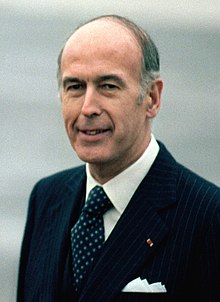
Back Конвент за бъдещето на Европа Bulgarian Konvent o budoucnosti Evropy Czech Συνέλευση για το Μέλλον της Ευρώπης Greek Eŭropa Konvencio Esperanto Convención sobre el futuro de Europa Spanish کنوانسیون آینده اتحادیه اروپا Persian Convention sur l'avenir de l'Europe French Európai Konvent Hungarian Convenzione europea Italian Conventie over de Toekomst van Europa Dutch
| Date | February 28, 2002 – July 18, 2003 |
|---|---|
| Duration | 1 year, 4 months and 20 days |
| Location | Belgium |
| Also known as | European Convention, Constitutional Convention[1] |
| Type | Constituent assembly |
| Cause | Laeken Declaration |
| Motive | Provide starting point for the Intergovernmental Conference of Nice [2] |
| Participants | Chairman: Valéry René Marie Georges Giscard d'Estaing Vice-Chairmen: Giuliano Amato, Jean-Luc Dehaene |
| Outcome | Draft Treaty establishing a Constitution for Europe |
| The use of cause is for the summoning body and the motive is the mandate | |

| History of the European Union |
|---|
 |
|
|
The Convention on the Future of the European Union,[3] also known as the European Convention, was a body established by the European Council in December 2001 as a result of the Laeken Declaration. Inspired by the Philadelphia Convention that led to the adoption of the United States federal Constitution, its purpose was to produce a draft constitution for the European Union for the Council to finalise and adopt. The Convention finished its work in July 2003 with their Draft Treaty establishing a Constitution for Europe. See History of the European Constitution for developments after this point.
- ^ Nungent, Neil (2017). Paterson, William E. (ed.). Government and Politics of the European Union (8th ed.). Palgrave Macmillan. p. 93. ISBN 9781137454089.
- ^ Nungent, Neil (2017). Paterson, William E. (ed.). Government and Politics of the European Union (8th ed.). Palgrave Macmillan. p. 94. ISBN 9781137454089.
- ^ IATE: Convention on the Future of the European Union